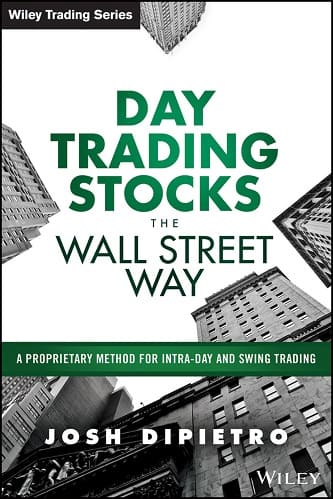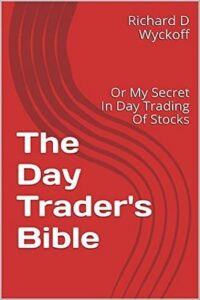Articles
Trading With Volume Profile By Sam Whitehill
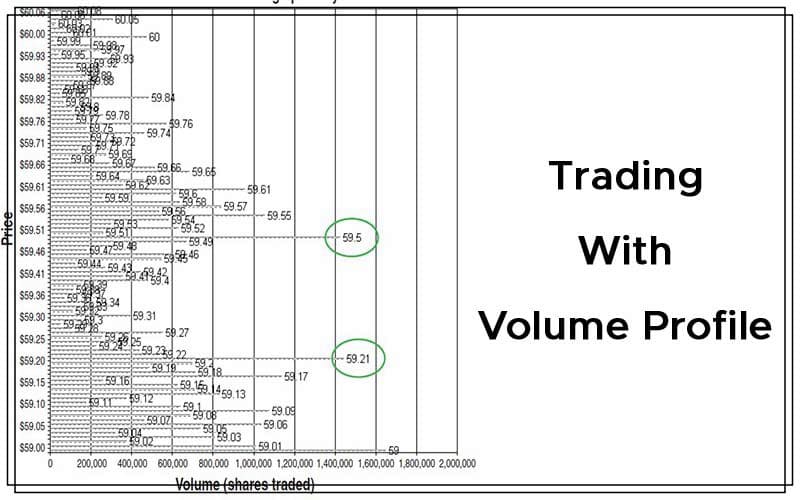
Daytrading stocks is largely a game of knowing critical support and resistance price levels. Here’s a valuable tool that identifies these levels quickly so you can make sound trading decisions. Typically, you need to scan through a substantial number of intraday stock charts in order to identify these critical support and resistance levels within any individual stock. This is a time-consuming and tedious process. Moreover, historical chart data is not always available for a time period extending beyond six months, as some charting packages stop showing data more than six months in the past.
VOLUME PROFILE
Volume profile is a valuable trading tool that can save time and allow you to more easily see significant price levels that occurred in the more distant past. Volume profile is sometimes referred to as “price by volume.” It is somewhat similar to the price activity chart in that it displays cumulative volume by price. It is also similar to Market Profile, but it does not include the time component and is considered a separate tool. Essentially, volume profile is a chart showing the amount of volume (number of shares traded) at each price level over some length of time. Instead of scanning through many intraday charts of a stock to find key support and resistance price levels, you can simply generate a volume profile chart in a fraction of the time. In addition, you can more easily see support and resistance levels from longer periods in the past.
Support and resistance price levels are important to most trading styles and of utmost importance to daytrading. Identifying these price levels correctly and quickly is not always an easy matter. For example, you might look over candlestick charts on hourly, daily, 15-minute, and five-minute time frames in order to identify and track significant support and resistance levels within a particular stock of interest. When scanning over a candlestick chart for price levels, you have to decide whether to focus on candles with heavier volume, candles that occurred more frequently at one price, the time of day the candle formed, and so forth.
This is typically a time-consuming process and can be prone to costly errors if not done carefully. By using volume profile, you can instantly generate a chart showing the significant support and resistance levels of a stock according to the amount of volume traded at each price. Volume profile can be calculated by adding up the number of shares traded at each price, over a specified period of time.
Suggested Books and Courses About Day Trading
Day Trading Stocks the Wall Street Way: A Proprietary Method For Intra-Day and Swing Trading
Original price was: $23.81.$11.91Current price is: $11.91.The Complete Guide to Day Trading: A Practical Manual from a Professional Day Trading Coach
Original price was: $16.87.$8.44Current price is: $8.44.The Forex Chartist Companion: A Visual Approach to Technical Analysis
Original price was: $23.66.$11.83Current price is: $11.83.The Day Trader’s Bible: Or My Secret In Day Trading Of Stocks
Original price was: $7.71.$3.86Current price is: $3.86.CALCULATING VOLUME PROFILE
There are obviously different ways to specify how to calculate the volume profile by varying the parameters. How far back in the past should you look? Should you look at the previous month or the past few months? Then you have to decide what time frame or frequency to use. Should you use a five-minute, 15-minute, hourly, or daily interval? In addition, you could use the close, open, high, or low price of each candle on a candlestick chart. These parameters can be changed and tweaked to meet each trader’s need or trading system.
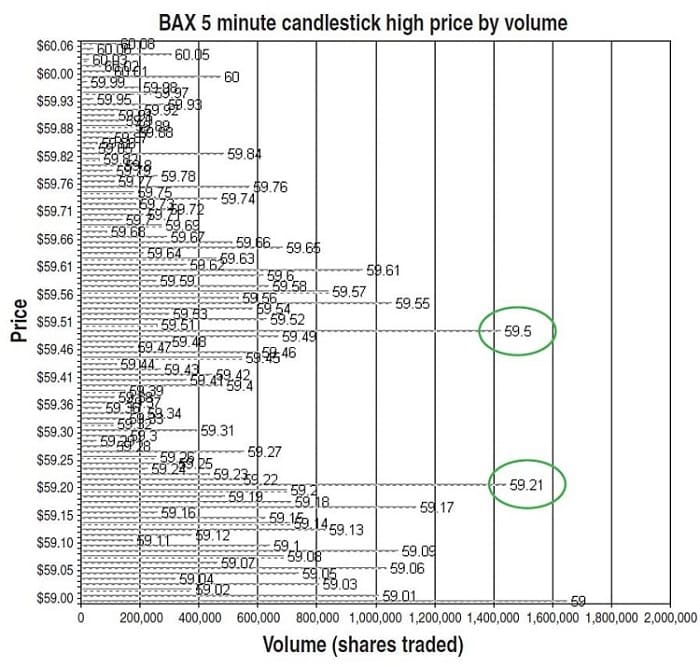
FIGURE 1: VOLUME PROFILE CHART FOR BAXTER INTERNATIONAL (7/30/09–1/29/10). This chart was created by summing up total volume traded at each five-minute candlestick’s highest price over the previous six months. Note the circled prices have much more volume. They should be more significant support and resistance levels than other nearby prices with much less volume.
The example here uses the highest price of each five-minute candlestick on a stock chart over the past six months. You can vary which candlestick price, for example, high or low, and how much historical price data to use in the volume profile calculation, depending on your preferences. Some traders may want to use a candlestick’s closing price or use a higher time frame such as the hourly chart. See Figure 1 for an example of a volume profile chart using the five-minute candlestick chart of Baxter International (BAX) over the past six months.
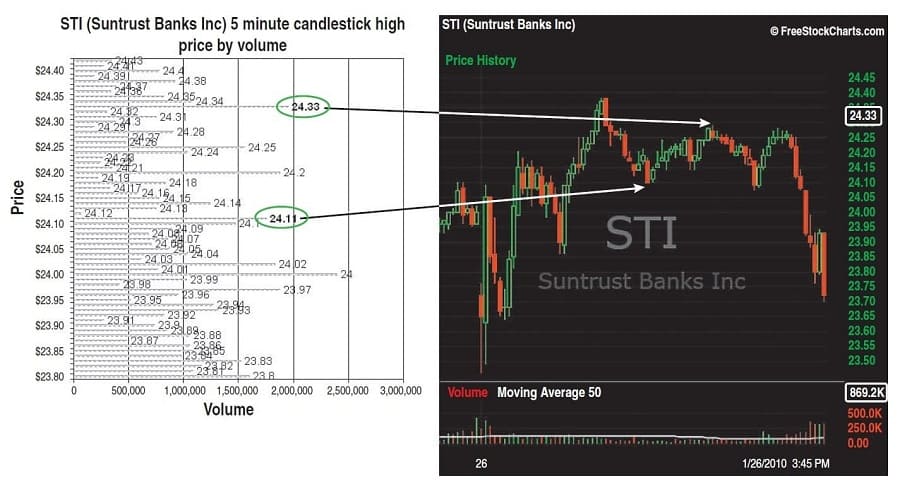
FIGURE 2: SUNTRUST BANKS INC. (STI) FIVE-MINUTE CANDLESTICK HIGH PRICE BY VOLUME. Note the prices with the highest volume correspond to more significant support/resistance levels. This is illustrated here with $24.33 being resistance and $24.11 being support during midday on January 26, 2010.
The historical data used in creating this chart can be downloaded for free from stockrageous.com. The data is stored in a .csv file. This file contains the historical price data of a particular stock as recorded on a candlestick chart (that is, open, high, low, and closing prices). After downloading the file for a particular stock, simply open in it in a spreadsheet application such as Microsoft Excel. Next, add up the volume at the high price for each candlestick and follow the example in Figure 1. You can do this using Microsoft Excel’s subtotal function. You must extract the subtotals containing the volume traded at each price. Once these subtotals are extracted, they can be plotted as the volume profile graph. To graph them, plot the data using Excel’s bar chart.
COMPARING VOLUME PROFILE TO THE CHARTS
To check whether this volume profile chart provides a good indicator of support and resistance levels, in Figure 2 I have compared it to a five-minute candlestick chart. Another example shows the support and resistance levels for Peabody Energy Corp. (BTU) (Figure 3). Volume profile can also be very helpful in showing price levels that occurred in the more distant past (for instance, over six months), as they will not be easy to find within most charting packages.
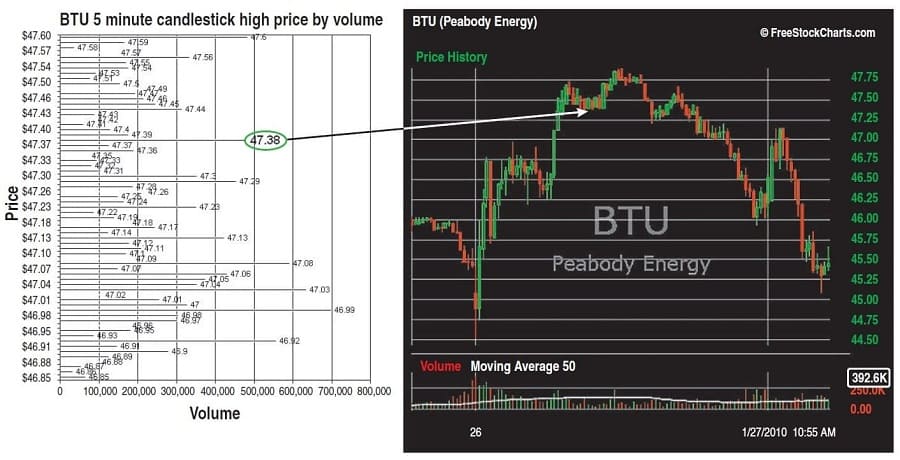
FIGURE 3: PEABODY ENERGY CORP. VOLUME PROFILE (7/31/09–1/20/10). Note the support at $47.38 as shown by much more volume than other nearby prices on this volume profile chart. Candlestick chart at right as of January 26, 2010.
However, by looking at the volume profile chart, you can see support and resistance levels from even several years ago, although only at the daily level. In this case, the daily level means only the open, high, low, and close for the day as opposed to an hourly or 15-minute interval within a particular day. Nevertheless, these are very useful when trading a stock breaking out of a 52-week high or low.
VOLUME PROFILE’S EDGE
Volume profile gives a trader good insight into a stock’s key support and resistance levels. It can highlight critical price levels that may not be so apparent on a typical candlestick chart. Overall, it is a very useful trading tool, especially for daytraders.
Sam Whitehill has five years’ experience in the financial industry, including daytrading at a proprietary trading firm and risk management at an investment bank. He holds a bachelor’s degree in commerce from the University of Virginia’s McIntire School of Commerce.

